Amazing Lemon Curd Donuts – These light and fluffy homemade yeast donuts are deep fried, coated in lemon sugar and filled with a lemon curd whipped cream! A lemon lover's delight!
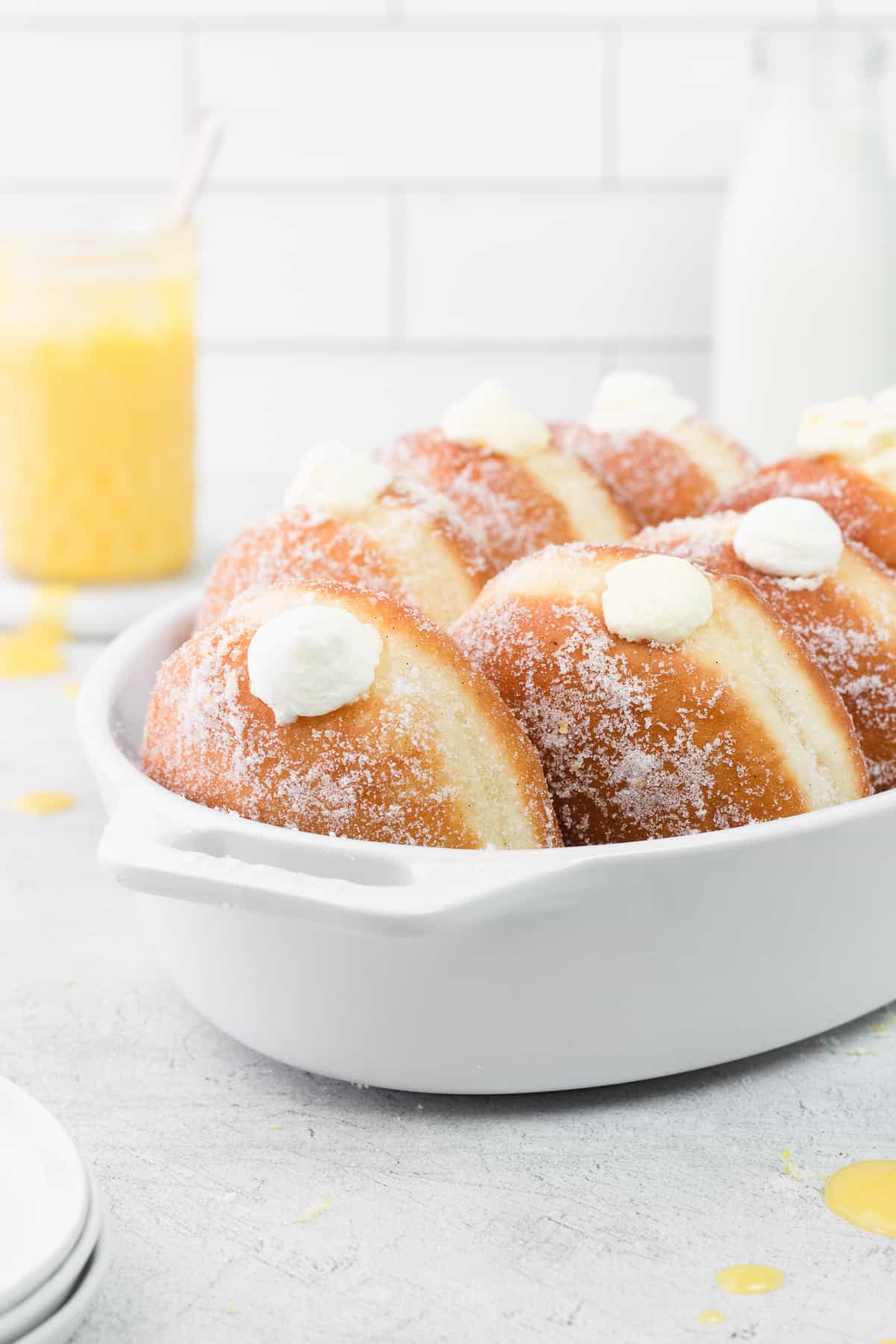
Happy National Donut Day!
It's no secret how much I LOVE donuts! Some of my absolute favorites are my Nutella Donuts, Raspberry Cheesecake Donuts and Old Fashioned Donuts!
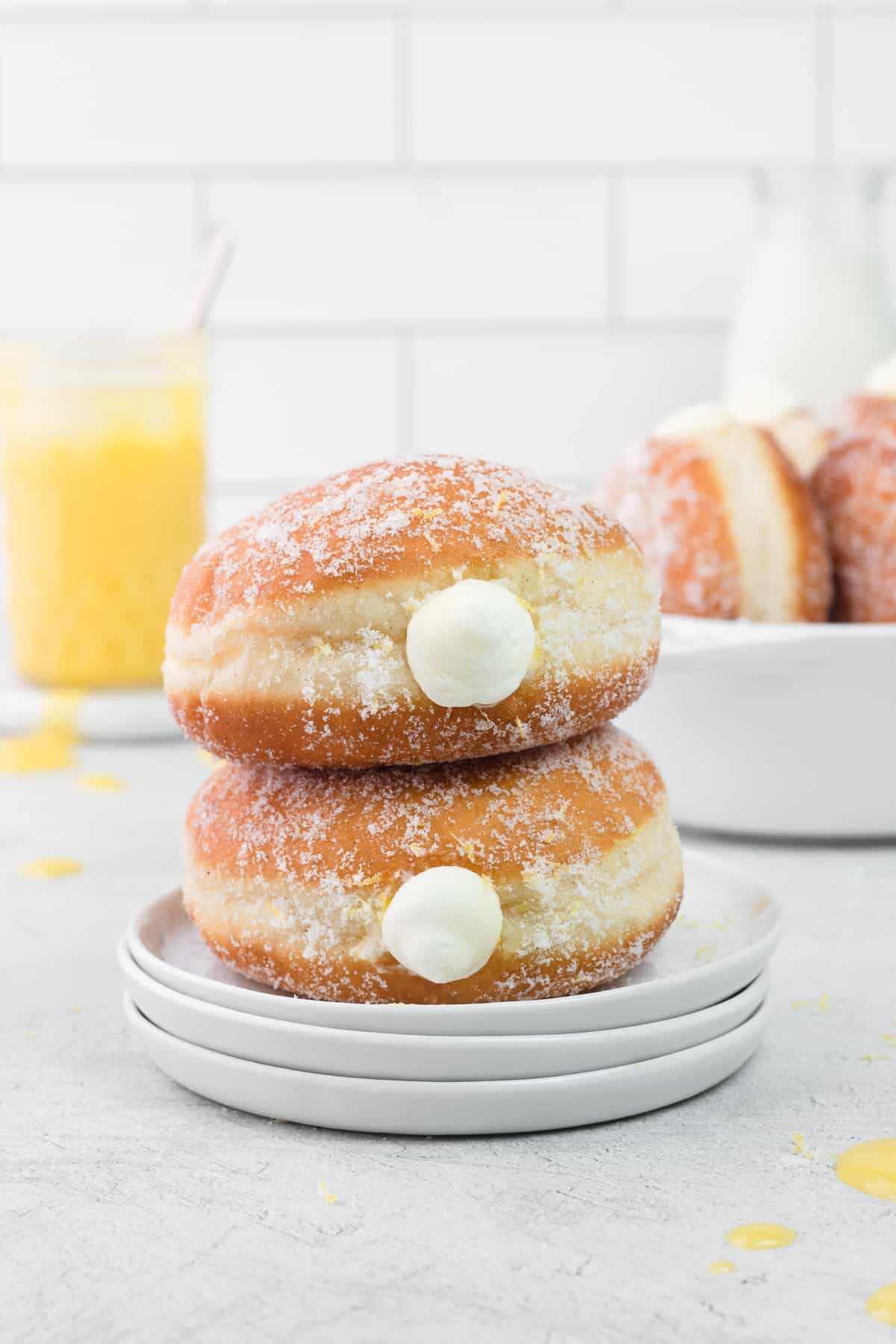
Lemon Curd Donuts Ingredients

Donuts
- Bread Flour & All-Purpose Flour. I like using a combination. Bread flour has a higher amount of protein, which will add structure to your donuts. If you’re unable to find bread flour, you can use all-purpose.
- Malted Milk Powder. This is optional, but highly recommended. It makes the donuts soft and enhances the flavor. I use this one.
- Salt. Rounds out the flavor.
- Nutmeg. Adds flavor.
- Buttermilk. Adds a bit of tanginess and makes the donuts tender. Warm buttermilk will be used to activate the yeast.
- Yeast. I am using dry active yeast for this recipe.
- White Sugar. A little bit of sugar will be used to feed the yeast when we activate it and ¼ cup will be added to the dough.
- Unsalted Butter. We’ll be using melted butter.
- Eggs + Yolk. Adds richness and structure. We want the eggs to be at room temperature here. To quickly bring your eggs to temp, submerge them into a bowl of hot tap water for about 15 minutes.
- Vanilla. Adds flavor. You can use vanilla paste or extract.

Filling
- Lemon Curd. Although you can use store-bought lemon curd, I highly recommend making your own because it's so easy and tastes so much better. My homemade recipe will be linked below.
- Heavy Whipping Cream. Heavy whipping cream will be whipped to stiff peaks.
Lemon Sugar
- White Sugar. White granulated sugar adds a nice crunchy texture.
- Lemon Zest. Fresh lemon zest adds so much brightness.
See recipe card for quantities.
Lemon Curd Donuts Instructions
ON DAY 1...
Step 1. Make your homemade Lemon Curd. Recipe can be found here! You can make this ahead and store it in the fridge until needed.
Step 2. Make your dough. Start by blooming your active dry yeast in warm buttermilk and 1 teaspoon of sugar for about 8 to 10 minutes. The yeast mixture should be frothy.
Step 3. In the bowl of your stand mixer, add bread flour, all-purpose flour, ¼ cup sugar, frothy yeast mixture, 2 eggs, 1 yolk, melted butter, vanilla, malted milk powder, nutmeg. With a spatula, mix until the dough roughly comes together (will be shaggy).
Step 4. Fit your stand mixer with a hook attachment and knead the dough on medium speed for 10 minutes. The dough should be shiny and elastic. At the end 10 minutes, the dough should pull from the sides of the bowl, but will stick to the bottom of the bowl. Do not be tempted to add extra flour, just let the stand mixer do all the work.
Window Pane Test
Your dough is done kneading when it passes the Window Pane Test. To perform the test, take a small (2 tbsp) ball of dough and stretch it into a small square. It should be stretched thin enough to let light pass through without tearing it. If it tears, knead for an additional 1 to 2 minutes. See photos below for reference.
Step 5. Coat your hands with oil and lift the dough out of the bowl and form it into a ball. Generously oil your bowl (I use the same one) and place the dough back in. Cover with cling wrap and place in the refrigerator overnight.
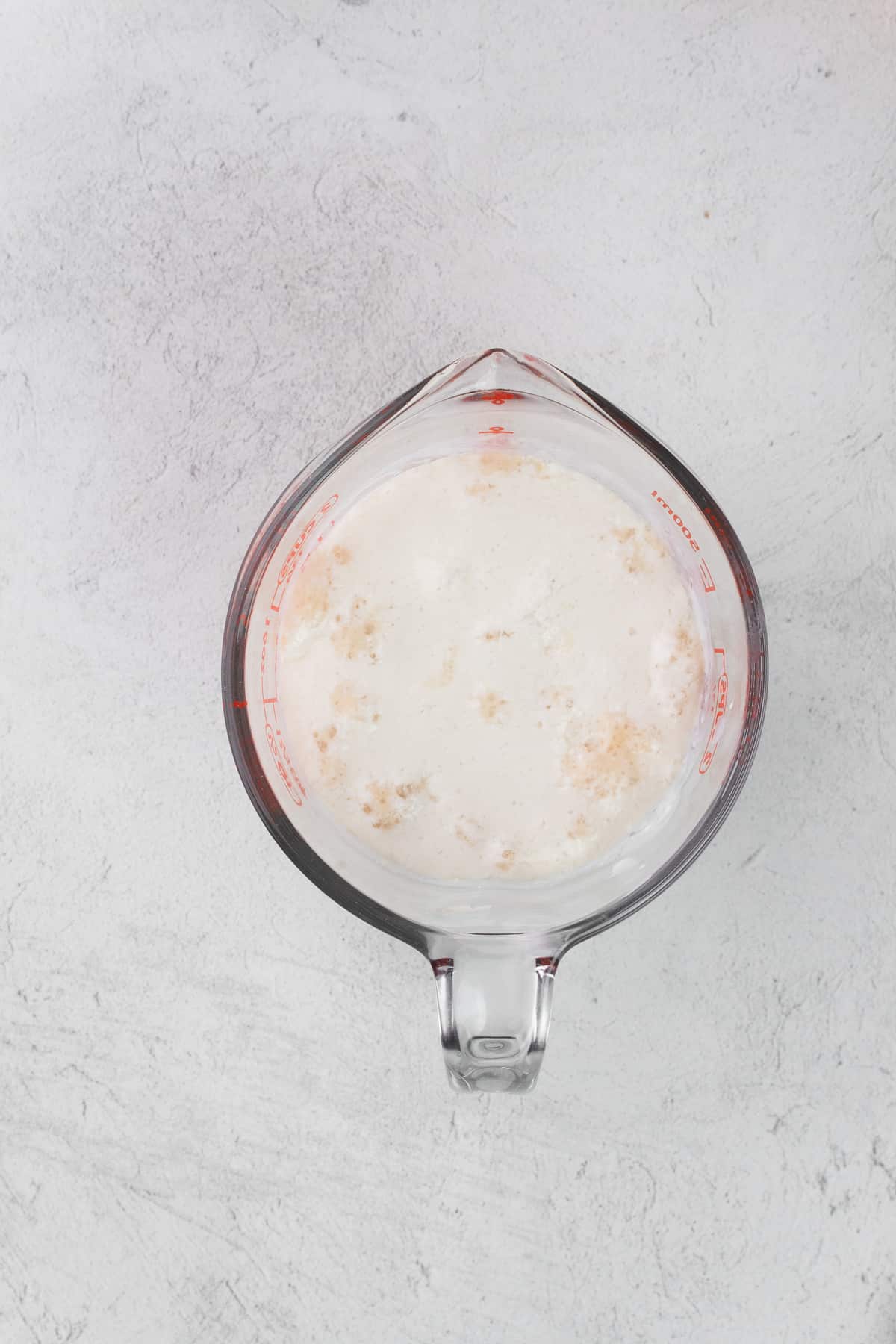
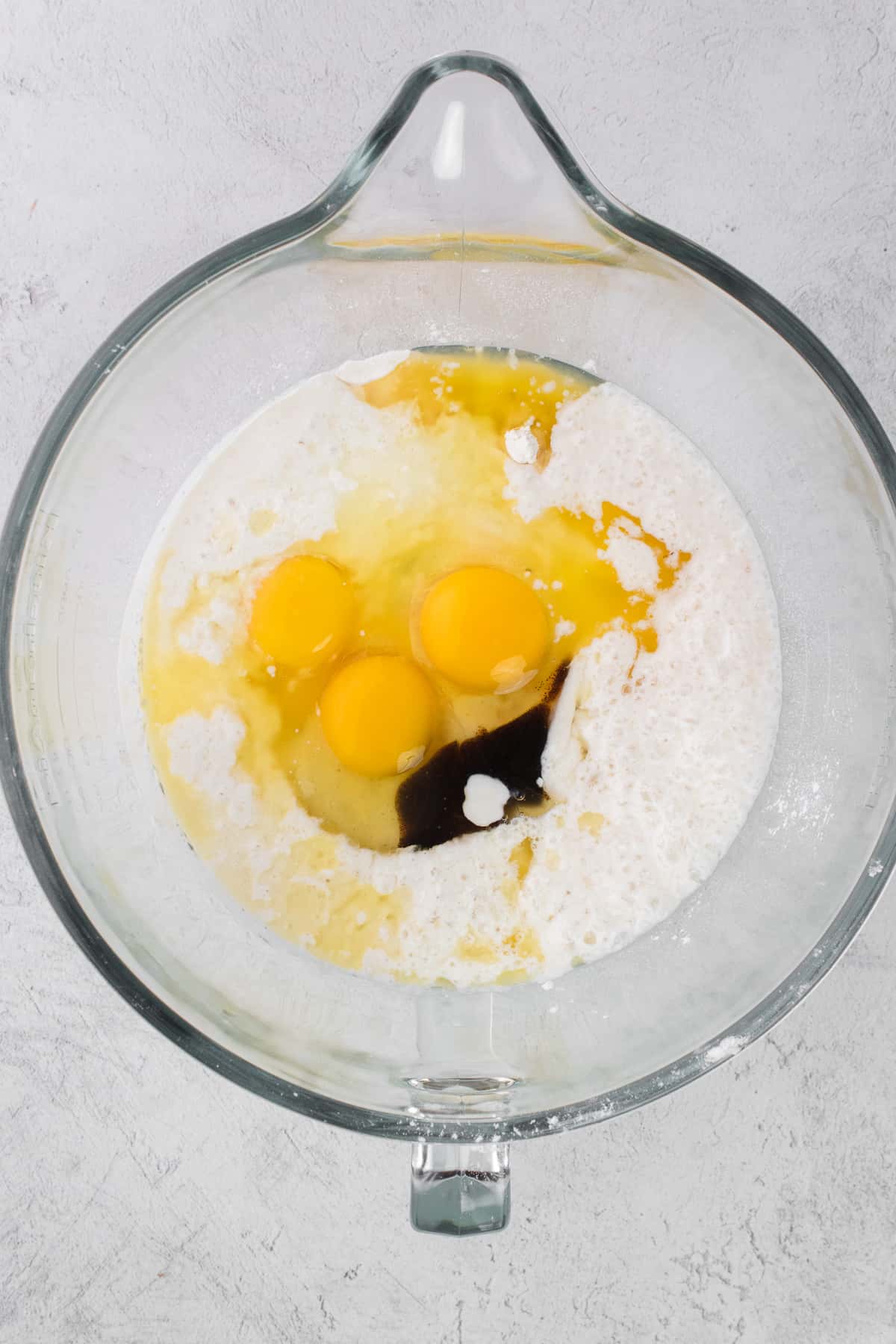
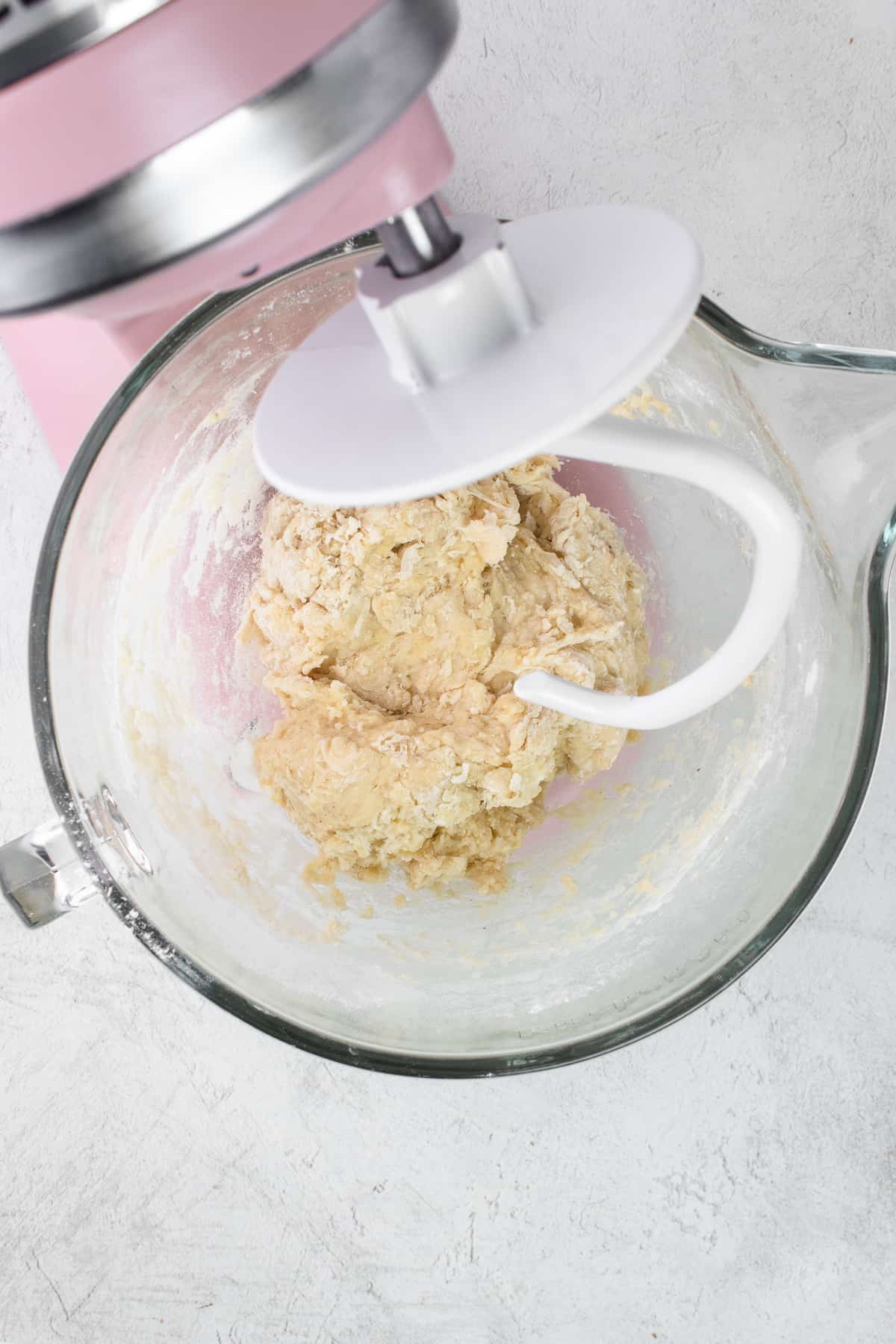
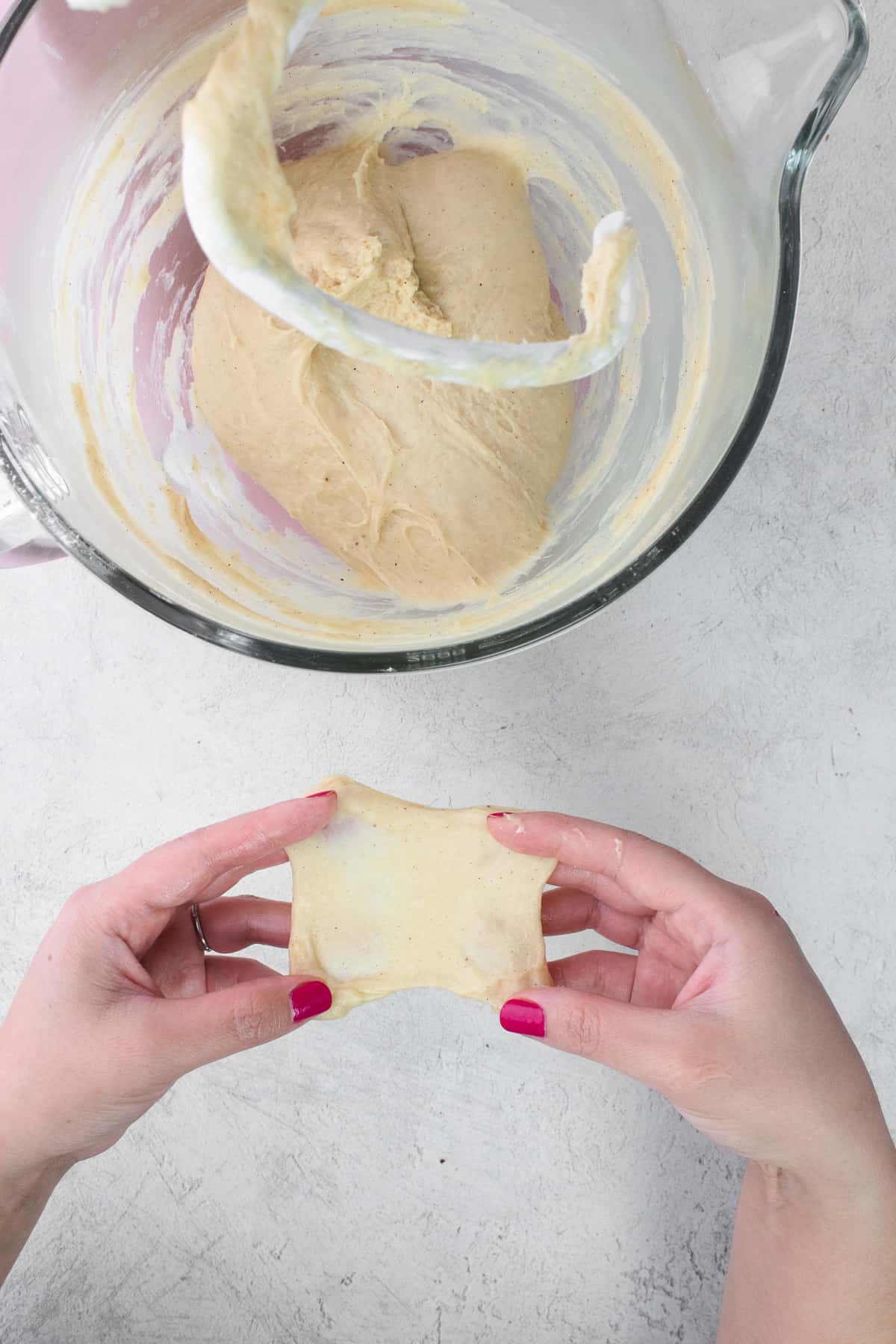
Window Pane Test
ON DAY 2...
Step 1. Shape your donuts. Remove from the fridge and punch your dough down to deflate it and then transfer to a lightly floured surface. Portion into 12 equal pieces. Using a kitchen scale, measure each ball of dough to make sure they are as even as possible. Mine were about 70 grams each.
Step 2. Grab a piece of dough and press it flat to get rid of any air bubbles. Then gather and pinch the edges together and place it on your work surface. Next, start rolling the dough into a ball with your hand in a “claw” shape. You’ll want the balls to be as tight and smooth as possible. Please watch the video below to see the technique. Place each ball of dough onto a 4×4 inch (10×10 cm) piece of parchment paper. I placed 6 to 8 donuts on each baking tray to give them more than enough room to proof.
Step 3. Loosely cover with cling wrap and allow to proof for at least 1 hour or until they have doubled in size (mine took 1 hour and 10 minutes). Be careful not to overproof them as it can lead to dense and oily donuts. The best way to know if your donuts are fully proofed is to lightly press them with your finger. If the indentation holds and does not bounce back right away, they’re ready!
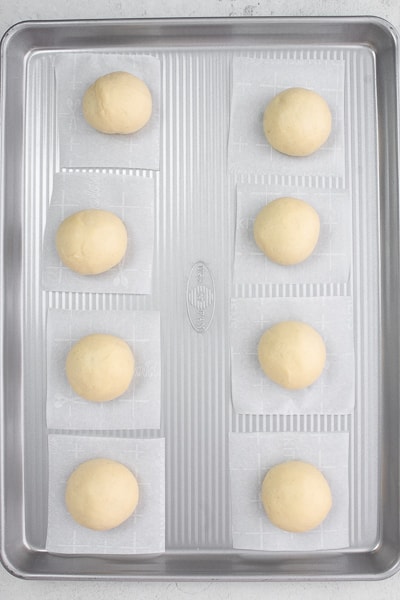
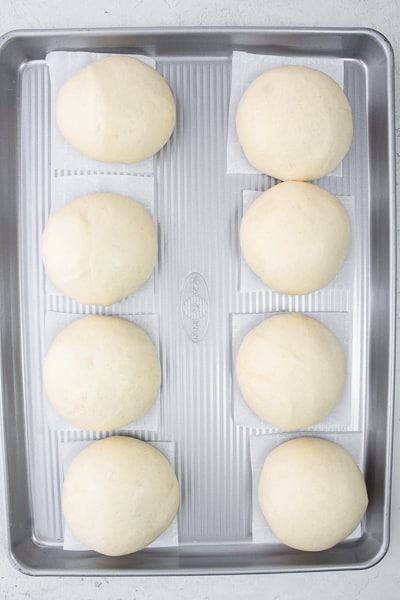
Step 4. Prep your filling & coating. For the filling, whip your heavy cream to stiff peaks and then gently fold the lemon curd into the cream. Transfer the filling into a large piping bag or ziploc bag fitted with a pastry tip and keep in the fridge until needed. It's really important to keep the filling in the fridge as it loses volume and softens at room temperature.
For the coating, combine white sugar and lemon zest into a shallow bowl or dish and set aside until needed.
Step 5. Frying and finishing your donuts. With 20 minutes left of proofing, get your oil ready so that you can start frying right away. Fill a medium to large sized pot with at least 2 to 3 inches of vegetable shortening or neutral oil such as canola, vegetable, or avocado oil. Don't forget to clip a thermometer on the side of the pot to gauge the temperature.
Line 2 wire racks with paper towels and set aside.
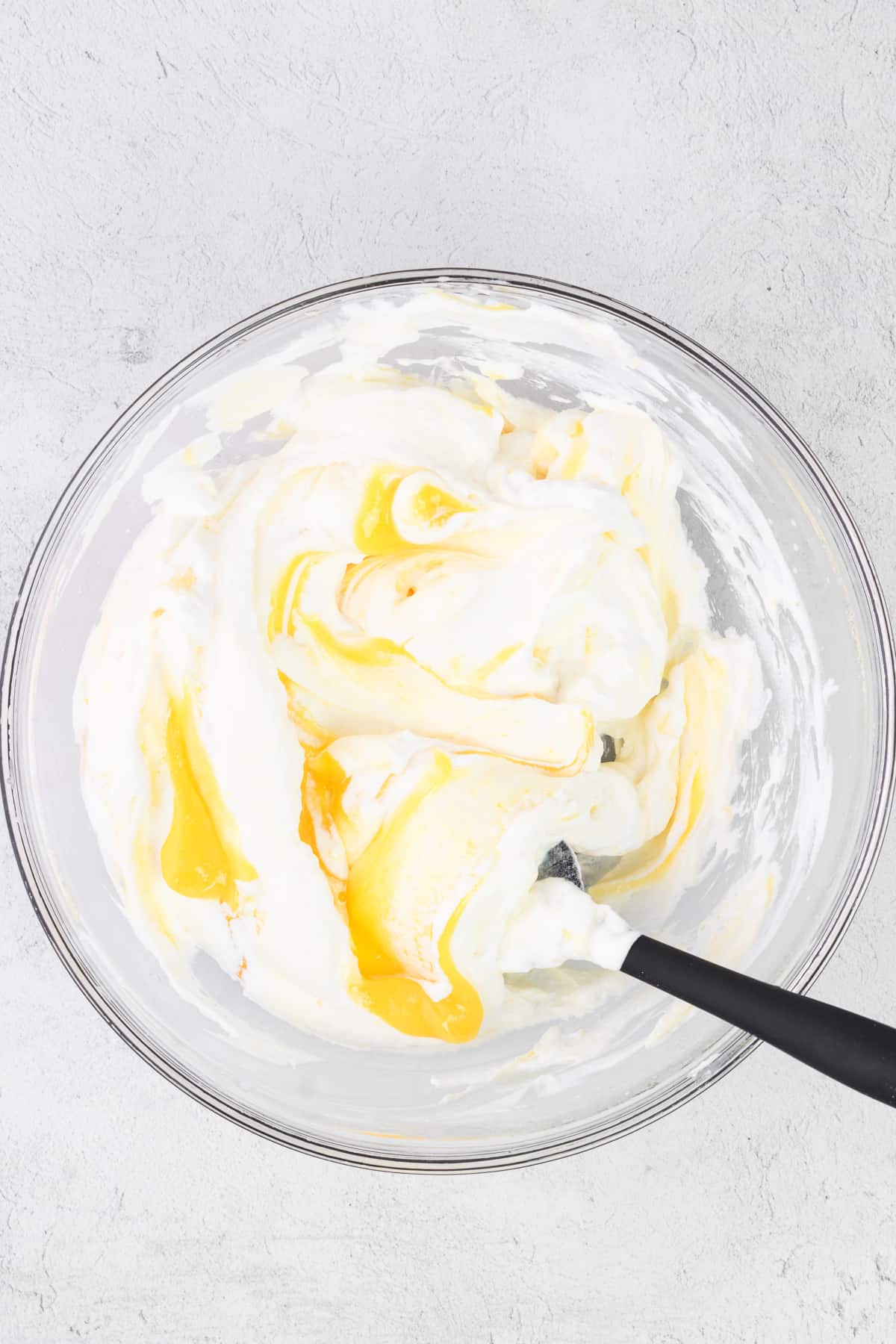

Step 6. Once the oil reaches 360ºF (183ºF), fry 2 to 3 donuts at a time for 2 minutes on each side (set a timer). Try not to overcrowd the pot as it will bring the temperature down. I HIGHLY recommend using a thermometer to monitor the oil. As you’re frying them in batches, make sure the oil is to the specified temperature before frying the next batch. If the oil is too hot, turn your burner down and wait until it comes down. If the temperature dips down, turn the burner up.
Step 7. Transfer cooked donuts onto a paper towel-lined cooling rack and allow to cool for a few minutes before rolling into your lemon sugar. Using a chopstick or small paring knife, create a small hole/pocket on the side of each donut and fill with your lemon curd cream. Devour right away and enjoy!!
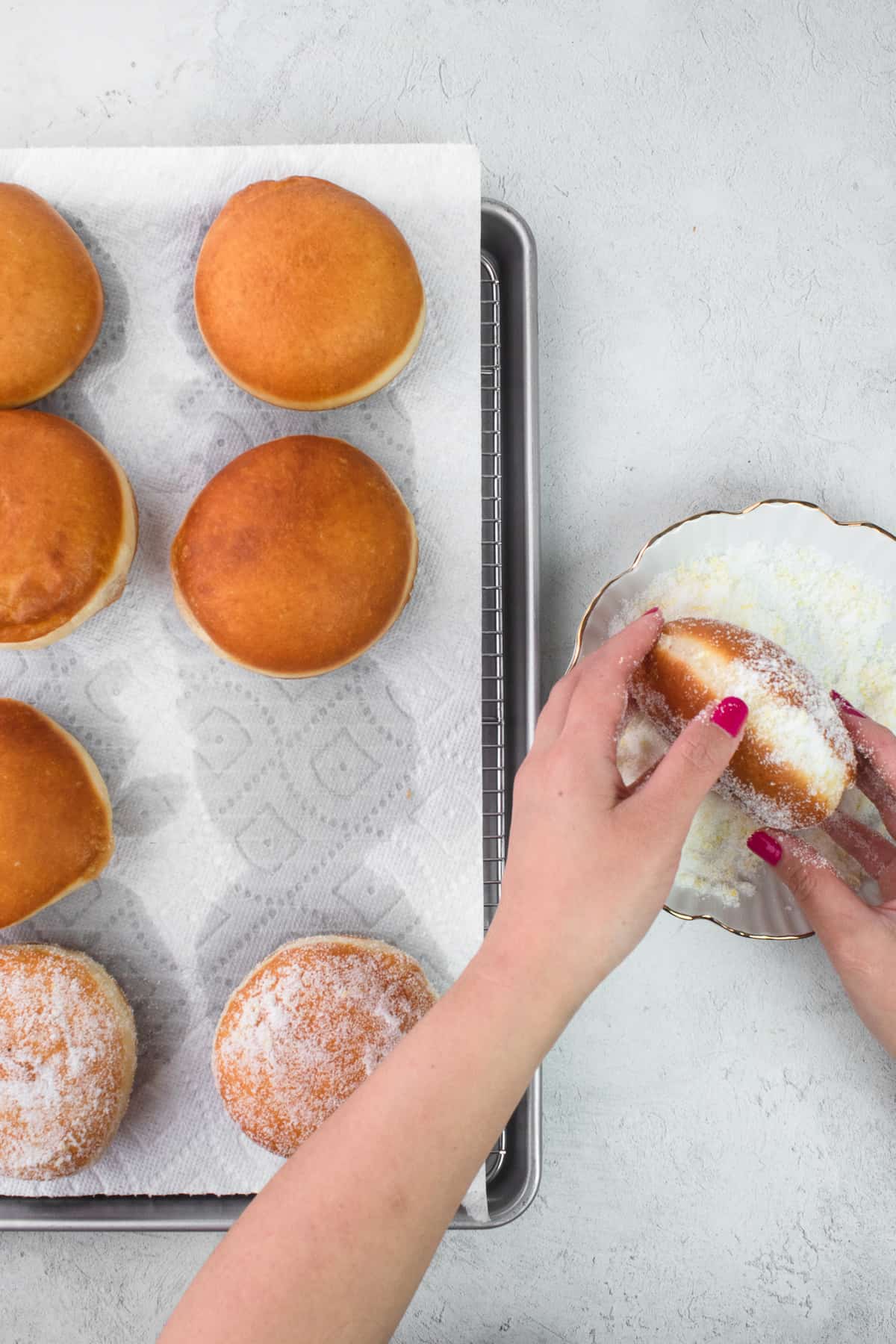
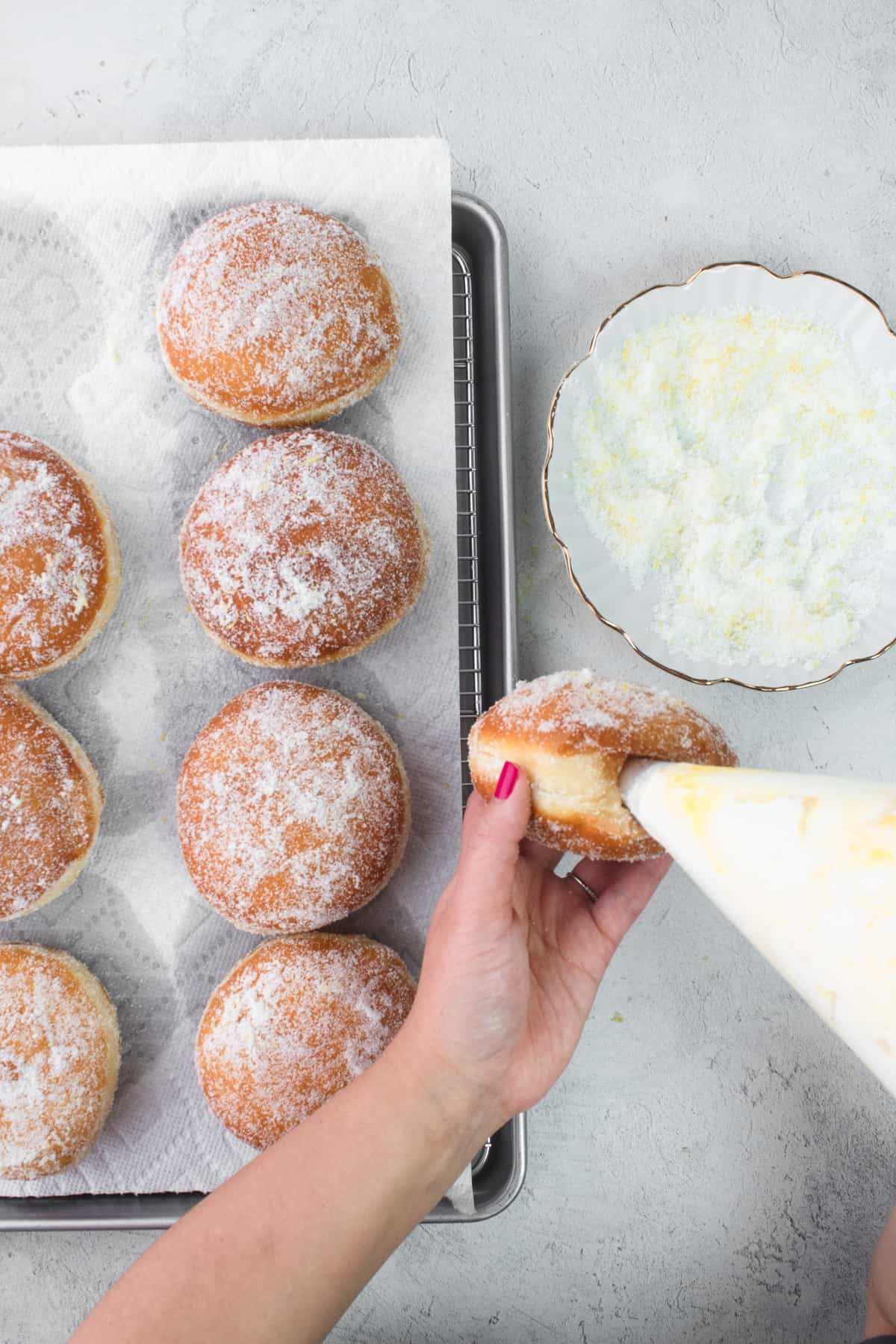
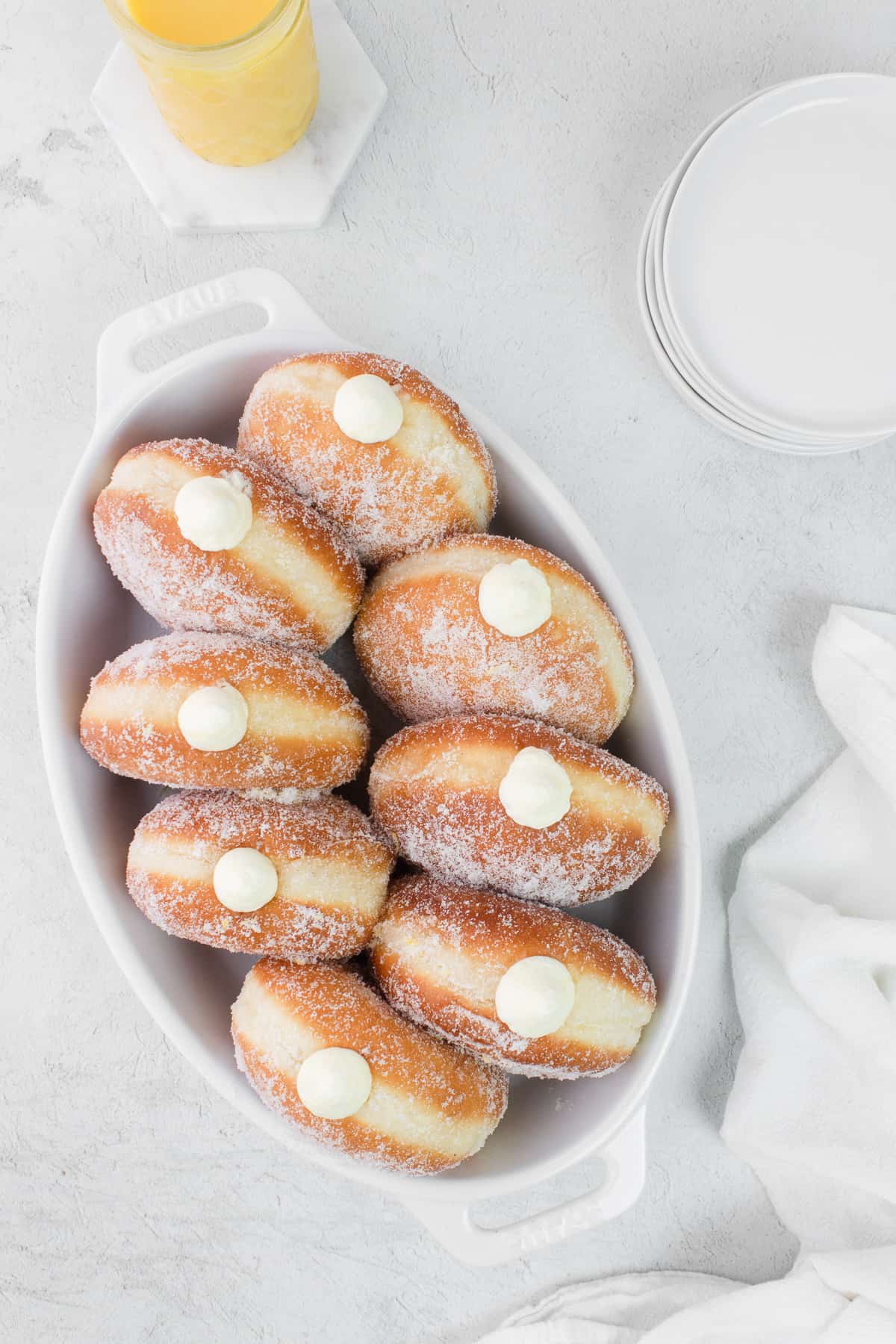
TIPS FOR SUCCESS!
- For best results I always recommend using a kitchen scale to weigh all your ingredients as it’s the most accurate way to bake. I like using King Arthur’s Weight Chart to convert to grams.
- If you are not using a kitchen scale, measure your flour correctly. Fluff and aerate your flour first, then spoon into your measuring cup and finally level off with the back of a butter knife. Do not pack it in as it will add too much flour.
- Make sure your yeast is fresh. Whether you use active dry yeast or instant yeast, always activate it by mixing with your warm liquid and a bit of sugar. Nothing is worse than continuing on with a recipe, and then discover later that your yeast is dead.
- Don’t skip the overnight rest. The dough will ferment slowly overnight, which is essential to developing flavor. The dough is also much easier to work with when it’s cold.
- Your dough is done kneading when it passes the window pane test. To perform the test, take a small (2 tbsp) ball of dough and stretch it into a small square. It should be stretched thin enough to let light pass through without tearing it. If it tears, knead for an additional 1 to 2 minutes.
- The best way to know if your donuts are fully proofed is to lightly press them with your finger. If the indentation holds and does not bounce back right away, they are ready to go!
- Use a thermometer to consistently check the oil’s temperature. It can rise and lower as you move through the frying process. Keep a close eye on the temperature to ensure it stay between 360ºF to 375ºF (183ºC to 190ºF). If the temperature of your oil is too low, your donuts run the risk of absorbing too much oil and if the oil is too hot, the donuts will brown too quickly and the center can be uncooked.
- Be prepared before you start frying. After your donuts are done proofing, this recipe moves quickly. Have your oil to temperature, thermometer clipped to your pot, a cooling rack lined with paper towels, lemon sugar and filling ready before you begin frying.
Variations
You can fill your donuts with just the lemon curd and coat in powdered sugar.
Not a fan of lemon? No worries, you can also fill them with your favorite jam.
Storage
Homemade donuts are best eaten right away or within a day. If you would like to prolong the donuts for a day or 2, keep the lemon curd whipped cream in the fridge and store unfilled donuts in an airtight container on the counter. Simply, fill them when you want to eat them.
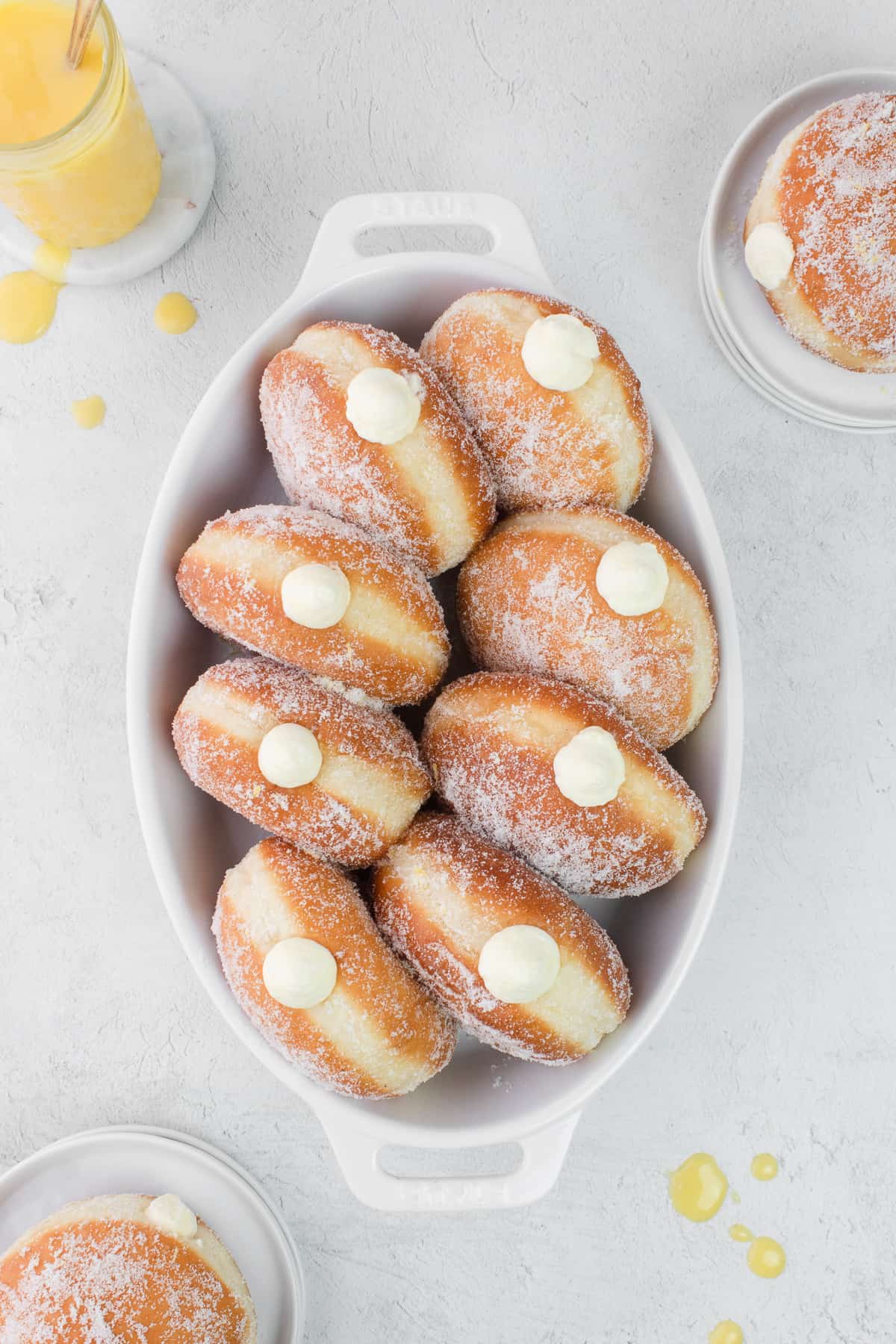
You may also enjoy these:
Did you try this recipe? Please consider leaving a star rating and review below and tag me on Instagram @shortstackkitchen. This provides helpful feedback to myself and other readers. Thank you so much!
Print📖 Recipe

Lemon Curd Donuts
- Total Time: 1 Hr + 30 Mins + Overnight
- Yield: 12 Donuts
Description
Amazing Lemon Curd Donuts – These light and fluffy homemade yeast donuts are deep fried, coated in lemon sugar and filled with a lemon curd whipped cream! A lemon lover's delight!
Ingredients
For the Donuts
- 1 Cup (227g) Buttermilk
- 2 ¼ Tsp (7g) Active Dry Yeast
- ¼ Cup + 1 teaspoon (50g + 4g) Granulated White Sugar, divided
- 4 Tbsp (57g) Butter, melted
- 2 Large Eggs + 1 Yolk, room temp
- 1 Tsp Vanilla Extract
- 2 Cups (240g) Bread Flour
- 2 Cups (240g) All-Purpose Flour
- 2 Tbsp Malted Milk Powder (optional)
- ½ Tsp Salt
- Frying Oil
Lemon Sugar
- ¾ Cup (150g) Granulated White Sugar
- Zest of 1 Large Lemon
Filling
- A Batch of Lemon Curd
- 2 Cups (473g) Heavy Whipping Cream
Instructions
ON DAY 1...
-
Make your homemade Lemon Curd. Recipe can be found here! You can make this ahead and store it in the fridge until needed.
-
Make your dough. Start by blooming your active dry yeast in warm buttermilk and 1 teaspoon of sugar for about 8 to 10 minutes. The yeast mixture should be frothy.
-
In the bowl of your stand mixer, add bread flour, all-purpose flour, ¼ cup sugar, frothy yeast mixture, 2 eggs, 1 yolk, melted butter, vanilla, malted milk powder, nutmeg. With a spatula, mix until the dough roughly comes together (will be shaggy).
-
Fit your stand mixer with a hook attachment and knead the dough on medium speed for 10 minutes. The dough should be shiny and elastic. At the end 10 minutes, the dough should pull from the sides of the bowl, but will stick to the bottom of the bowl. Do not be tempted to add extra flour, just let the stand mixer do all the work.
-
Coat your hands with oil and lift the dough out of the bowl and form it into a ball. Generously oil your bowl (I use the same one) and place the dough back in. Cover with cling wrap and place in the refrigerator overnight.
ON DAY 2...
- Shape your donuts. Remove from the fridge and punch your dough down to deflate it and then transfer to a lightly floured surface. Portion into 12 equal pieces. Using a kitchen scale, measure each ball of dough to make sure they are as even as possible. Mine were about 70 grams each.
- Grab a piece of dough and press it flat to get rid of any air bubbles. Then gather and pinch the edges together and place it on your work surface. Next, start rolling the dough into a ball with your hand in a “claw” shape. You’ll want the balls to be as tight and smooth as possible. Please watch the video below to see the technique. Place each ball of dough onto a 4×4 inch (10×10 cm) piece of parchment paper. I placed 6 to 8 donuts on each baking tray to give them more than enough room to proof.
- Loosely cover with cling wrap and allow to proof for at least 1 hour or until they have doubled in size (mine took 1 hour and 10 minutes). Be careful not to overproof them as it can lead to dense and oily donuts. The best way to know if your donuts are fully proofed is to lightly press them with your finger. If the indentation holds and does not bounce back right away, they’re ready!
-
Prep your filling & coating. For the filling, whip your heavy cream to stiff peaks and then gently fold the lemon curd into the cream. Transfer the filling into a large piping bag or ziploc bag fitted with a pastry tip and keep in the fridge until needed. It's really important to keep the filling in the fridge as it loses volume and softens at room temperature.
For the coating, combine white sugar and lemon zest into a shallow bowl or dish and set aside until needed.
-
Frying and finishing your donuts. With 20 minutes left of proofing, get your oil ready so that you can start frying right away. Fill a medium to large sized pot with at least 2 to 3 inches of vegetable shortening or neutral oil such as canola, vegetable, or avocado oil. Don't forget to clip a thermometer on the side of the pot to gauge the temperature.
Line 2 wire racks with paper towels and set aside.
-
Once the oil reaches 360ºF (183ºF), fry 2 to 3 donuts at a time for 2 minutes on each side (set a timer). Try not to overcrowd the pot as it will bring the temperature down. I HIGHLY recommend using a thermometer to monitor the oil. As you’re frying them in batches, make sure the oil is to the specified temperature before frying the next batch. If the oil is too hot, turn your burner down and wait until it comes down. If the temperature dips down, turn the burner up.
-
Transfer cooked donuts onto a paper towel-lined cooling rack and allow to cool for a few minutes before rolling into your lemon sugar. Using a chopstick or small paring knife, create a small hole/pocket on the side of each donut and fill with your lemon curd cream. Devour right away and enjoy!!







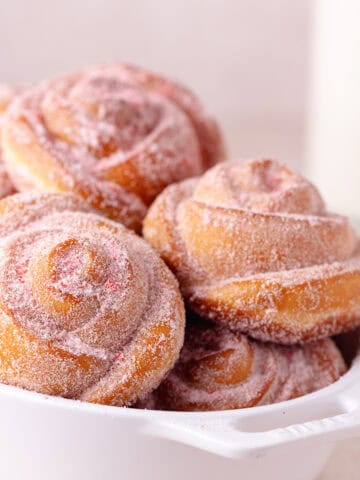
Leave a Rating and Comment